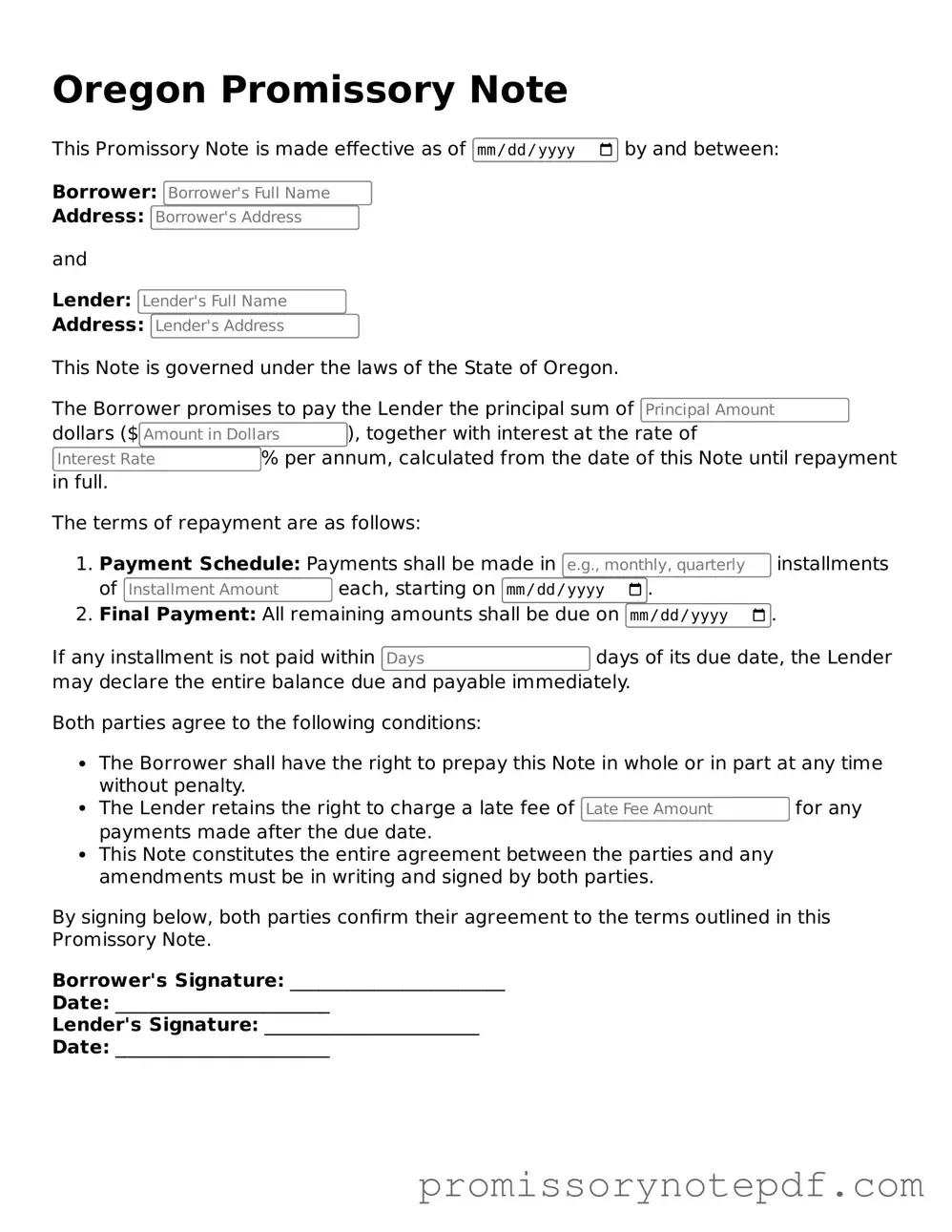Similar forms
The Oregon Promissory Note form shares similarities with a Loan Agreement. Both documents outline the terms of a loan, including the amount borrowed, interest rates, and repayment schedules. A Loan Agreement often provides more detailed terms, such as collateral and default conditions, while a Promissory Note is typically simpler and focuses primarily on the borrower's promise to repay. Both serve to protect the lender's interests and establish clear expectations for repayment.
Another document similar to the Oregon Promissory Note is the Mortgage Agreement. While a Promissory Note signifies the borrower's commitment to repay a loan, a Mortgage Agreement secures that promise with real property. In essence, the Mortgage Agreement gives the lender a legal claim to the property if the borrower defaults. Both documents work together to ensure the lender's rights are protected, but they serve different functions in the loan process.
The Oregon Promissory Note is also akin to a Personal Guarantee. A Personal Guarantee is a commitment made by an individual to repay a loan if the primary borrower defaults. Like a Promissory Note, it creates a legal obligation. However, a Personal Guarantee often involves an individual’s personal assets, whereas a Promissory Note focuses on the loan itself. Both documents aim to provide security for the lender, but they do so in distinct ways.
A similar document is the Installment Agreement. This type of agreement outlines a payment plan for a debt, similar to the repayment terms in a Promissory Note. An Installment Agreement may cover various types of debts, including tax debts or unpaid bills. Both documents ensure that the borrower understands their obligation to pay over time, but an Installment Agreement may include additional details about the payment schedule and consequences for missed payments.
Lastly, the Oregon Promissory Note is comparable to a Secured Loan Agreement. This document specifies that a loan is backed by collateral, which provides additional security for the lender. Like a Promissory Note, it includes the loan amount and repayment terms. However, the Secured Loan Agreement also details the collateral involved and the lender's rights in the event of default. Both documents are essential in establishing the terms of a loan while protecting the lender's investment.
